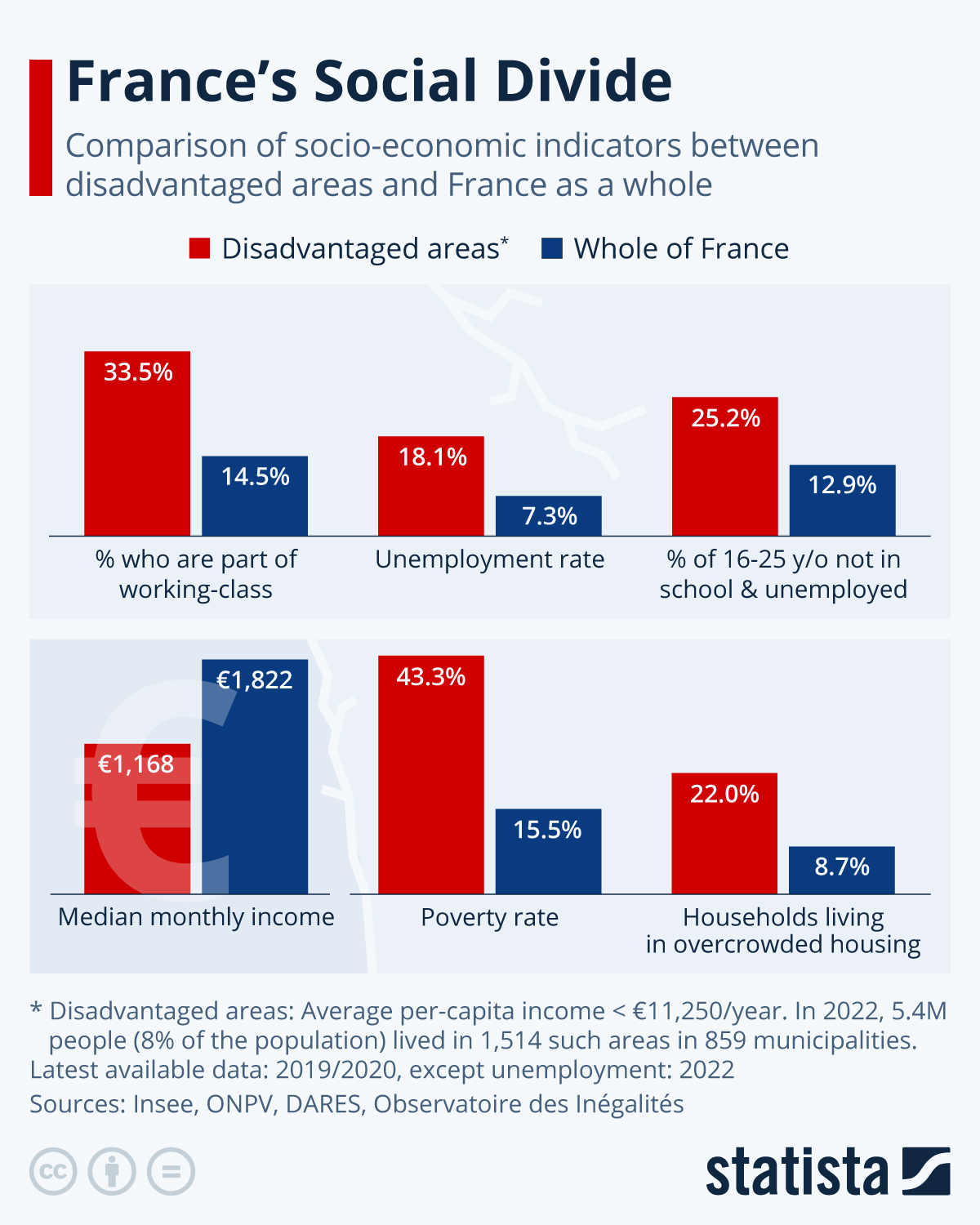The urban riots which broke out in France following the death of the 17-year-old Nahel M. during a police traffic check have revived the already long-standing debates on the problems of the French suburbs, which combine social, historical, town planning and security issues. Despite the "suburb plans" implemented for more than forty years, policies with regard to disadvantaged neighborhoods have not really succeeded in reducing inequalities and the social divide to the rest of the French population.
France's so-called "priority neighborhoods" are defined by the average income of their inhabitants: less than €11,250 per capita per year. The French government counts 1,514 priority neighborhoods spread over 859 municipalities, including approximately 5.4 million inhabitants, or 8% of the French population.
In these places, the unemployment rate is 2.5 times higher than the national average and around a quarter of young people aged 16 to 25 are not in education and unemployed (compared to 13 percent in the population as a whole). As our infographic also shows, half of the inhabitants of priority neighborhoods live on less than €1,168 per month (median net income), compared to €1,822 for all French people. This represents around €650 less per month to live on. The poverty rate in priority neighborhoods exceeds 40 percent (compared to 15.5 percent on average).





















